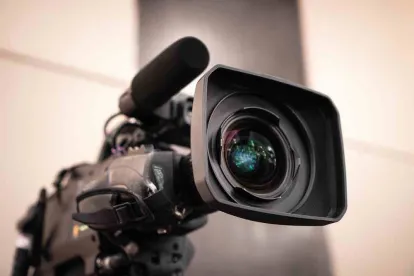In a case spanning nearly 40 years of art and touching the estates of two of the world’s most well-known artists, the US Court of Appeals for the Second Circuit clarified its position on the application of the fair use doctrine and its protection of transformative works. In doing so, the Second Circuit reversed the district court’s finding of fair use and held that a series of prints and illustrations of the musical artist Prince created by the visual artist Andy Warhol were substantially similar to a 1981 portrait photograph of Prince taken by the photographer Lynn Goldsmith. The Court remanded for further proceedings. The Andy Warhol Foundation for the Visual Arts, Inc. v. Lynn Goldsmith, et al., Case No. 19-2420-cv (2d Cir. Mar. 26, 2021) (Lynch, J.) (Sullivan, J., joined by Jacobs, J., concurring) (Jacobs, J., concurring).
In 1984, Goldsmith’s agency licensed her 1981 photograph of Prince to Vanity Fair for use as an artist reference for creating a rendering of Prince to accompany Vanity Fair‘s profile of the artist. What Goldsmith did not learn until more than 30 years later, shortly after Prince’s untimely death, was that the artist commissioned by Vanity Fair to create the Prince drawing was Andy Warhol, and that Warhol had also used the photograph to create an additional 15 silkscreen prints and illustrations, known as the Prince Series. In 2017, Goldsmith notified The Andy Warhol Foundation for the Visual Arts (AWF), as the successor to Warhol’s copyright in the Prince Series, of her claims of copyright infringement. AWF responded with a lawsuit seeking a declaratory judgment that the Prince Series works were non-infringing or, in the alternative, qualified as fair use of Goldsmith’s photograph. Goldsmith countersued for infringement. Relying on the Second Circuit’s 2013 holding in the copyright case Cariou v. Prince, the district court granted summary judgment to AWF, agreeing with its assertion of fair use and considering the Warhol work to be “transformative” of the original. Goldsmith appealed.
The appeal required the Second Circuit to consider, de novo, the four fair use factors under § 107 of the Copyright Act: (1) the purpose and character of the use, including whether such use is of a commercial nature or is for nonprofit educational purposes; (2) the nature of the copyrighted work; (3) the amount and substantiality of the portion used in relation to the copyrighted work as a whole; and (4) the effect of the use upon the potential market for or value of the copyrighted work.
The Court focused its analysis on the first fair use factor, and specifically the extent to which the Prince Series works were transformative of the original. The transformative nature of a work is determined by whether the new work merely supersedes the “objects of the original creation,” or whether it “instead adds something new, with a further purpose or different character, altering the first with new expression, meaning, or message.” The Court noted that the assessment of a transformative work is less clear where the secondary work does not “obviously comment on or relate back to the original . . . for a purpose other than that for which it was created,” unlike enumerated transformative uses of a work for criticism, comment or news reporting.
The Court revisited its holding in Cariou v. Prince, noting that the decision has not been immune from criticism. In Cariou, the Court rejected the proposition that a secondary work must comment on the original in order to be transformative and qualify as fair use. While the Court did not challenge the correctness of the Cariou decision based on its own facts, it clarified that the decision does not stand for the proposition that any secondary work is necessarily transformative as a matter of law if it adds a new aesthetic or new expression to the original source material. The Court highlighted derivative works as those that add new expression, meaning or message to the original, but which are specifically excluded from fair use and instead are rights granted to copyright holders.
The Court explained that in cases where a secondary work is neither an obvious commentary on nor clearly related back to the original work for a purpose other than that for which the original was created, the secondary work itself must embody a distinct artistic purpose that conveys a “new meaning or message” entirely separate from its source material. Applying this clarifying position in the present case, the Court explained that whether a work is transformative cannot turn on the stated or perceived intent of the artist in creating the secondary work, but instead turns on an examination of how the work may reasonably be perceived. At a bare minimum, to qualify as transformative, a secondary work must do more than recognizably derive from and retain the essential elements of its source material.
For AWS, that meant the ability to recognize the Prince Series as “Warhols” from an aesthetic perspective was not enough to qualify the works as transformative. Instead, without classifying the Prince Series as derivative works, the Court explained that the screen prints and illustrations of Prince generally present the same work in a different form without significantly adding to or altering the essential elements of the Goldsmith photograph of Prince.
Having decided that the fair use first factor fell in Goldsmith’s favor, the Court considered the other three factors and found them also to fall in favor of Goldsmith. Under the second factor, the nature of the copyrighted work, the Court recognized Goldsmith’s photograph as both creative and unpublished, and thus weighing in Goldsmith’s favor. Considering the third factor, the amount and substantiality of the use, the Court found that the Prince Series borrowed from Goldsmith’s work both quantitatively and qualitatively in a significant manner. Turning to the fourth (and final) factor, the potential for market harm and whether the secondary work usurps the market for the original by offering a competing substitute, the Court found that the Prince Series posed cognizable harm to Goldsmith’s market to license the original photograph.
Rejecting AWS’ fair use defense, the Court concluded that the works in the Prince Series were substantially similar to Goldsmith’s original photograph and remanded for further proceedings consistent with that finding.
In concurring opinions, Judge Sullivan and Judge Jacobs opined that the majority—and fair use jurisprudence, in general—relied too heavily on transformative use, and suggested a renewed focus on the effect on the potential market for the original work under the fourth factor. Judge Jacobs further issued a concurrence to note that the court’s holding did not touch on whether the infringement encumbered the original Prince Series works that are now with collectors or museums, as Goldsmith’s claims sought only damages and royalties for licensed reproductions of the Prince Series.




 />i
/>i
